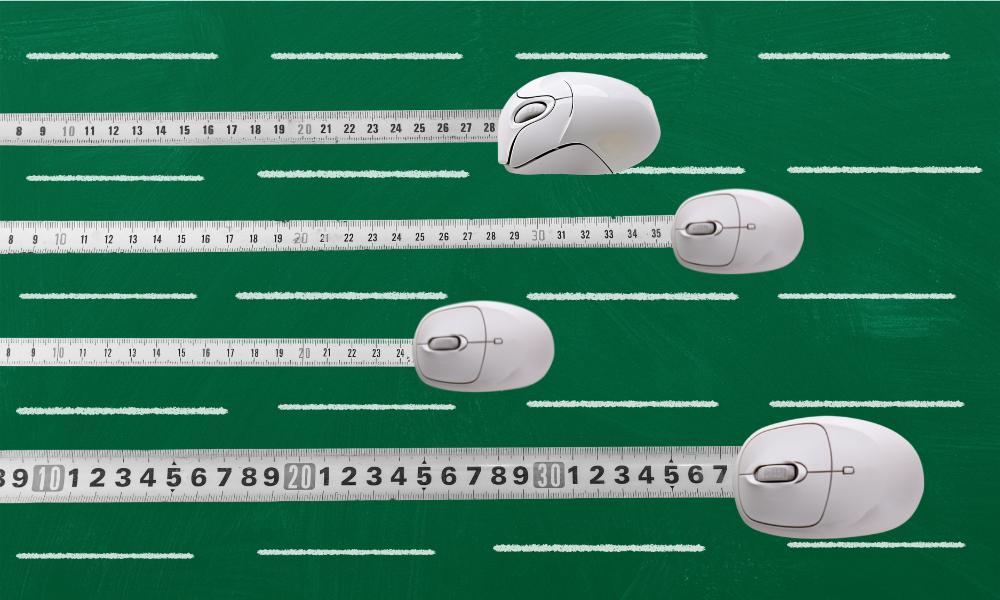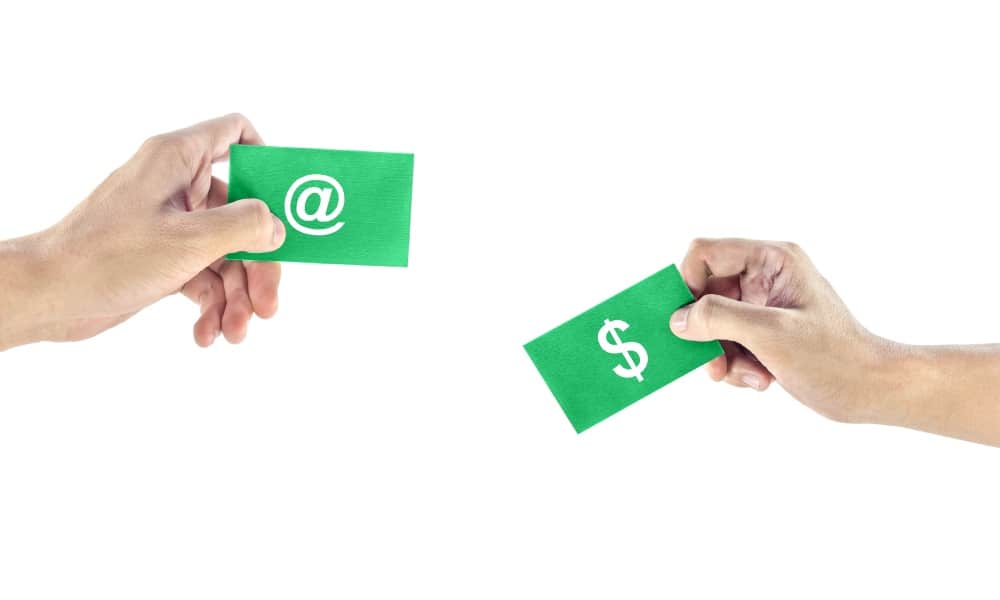Have you ever wondered how long your marketing emails should be?
It wasn’t something I’d thought about. My gut feeling is that emails, like blogs, should be as long as you need for the message you want to communicate. But quite by chance I found an article on the Hubspot blog which said that ‘it’s best practice for marketing emails to be between 50 and 125 words’.
I was stunned. I didn’t believe it. Wayyyy too short. How could that be right?
Google results about email length
I researched. (Well, I googled ‘How long should a marketing email be?’ and looked at everyone else’s research.) And here’s what I found.
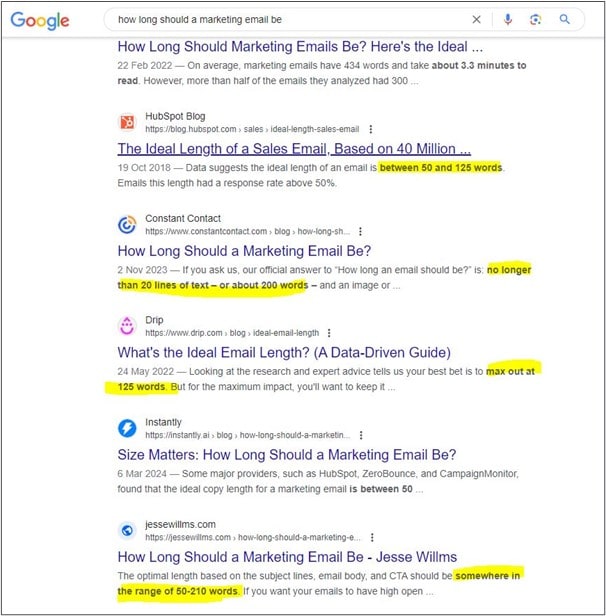
A mountain of results about the ideal length for a marketing email. Many of them said 50 to 125 words. The longest answer given was an average of 434 words.
I still found those numbers hard to believe. So I decided to look at the ‘marketing emails’ in my inbox.
What my inbox says about email length
I focused on the email newsletters I actually read. (Since I’m interested in effective emails, and ones I don’t read are by definition ineffective!)
I analysed the last six emails from three different sources. And then for good measure I added in the last six emails I sent for one of my clients. Here are the results. (The orange column is the average for each newsletter, and that grey bar across each chart is Hubspot’s ‘best practice’ length of 50-125 words.)
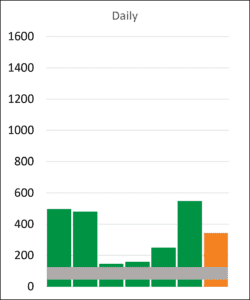
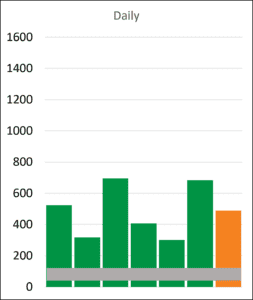
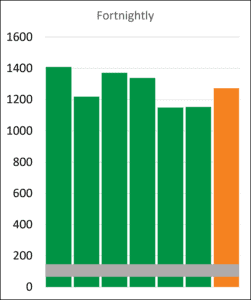
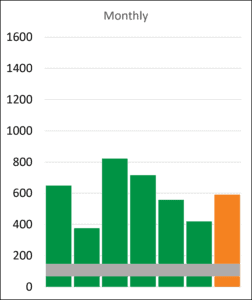
As you can see, my spot test results were quite different from what Hubspot and the other Google results were telling me.
The average length for my collection of marketing emails was 674 words.
- Every single email from the three newsletters I regularly read was longer than ‘best practice’.
- The shortest email was 144 words, or 15% above the best practice upper limit.
- The longest was 1408 words, over 100 times the recommended maximum length.
So now I had another question.
Why are these results so different?
I came up with multiple possible reasons for the difference. Here they are – along with what that might mean for you and your email marketing.
I’m not an ‘average’ email newsletter reader
This is highly possible. I’m a copywriter. I love words. I love reading. Maybe I have a higher tolerance for long emails than the average potential customer.
Alternatively, I’m a nerdy type who digs into the detail, so I like longer newsletters. Equally possible. This post is pretty nerdy, after all!
What does this mean for you and your email marketing?
Beware of averages! They can be misleading.
The average human being has approximately one breast and one testicle. How many ‘average’ human beings have you met in your life?
Instead of going for the average, test what works for your market and your clients.
Some emails sell with words and some sell with pictures
If you’re selling fashion or food, homewares or holidays, photos do a lot of the heavy lifting. Although for holidays, many of us are going to want to check the fine print before buying.
If you’re selling insurance, or software, or accounting services, photos alone are not going to cut it. The words become more important. You probably need more of them to get the message across.
What does this mean for you and your email marketing?
Think about what you’re selling, as well as who you’re selling to.
- Send me an email telling me my preferred brand of catfood is on sale this month and it’s easy for me to buy – even if I’ve never heard from you before.
- Send me an email telling me I have a once-off opportunity to invest in a new property development and I’m going to be a lot more cautious. You’ll need more than pictures and a price to get an enquiry from me. You’ll need some trust.
Different emails have different goals
This is really important and is completely lost in those statistics I found via Google.
The statistics usually come from email platforms – they have the data, after all. Problem is, their data comes from multiple clients with multiple goals.
Even a single business sends emails with different goals:
- A special offer to drive sales
- A survey, either to collect data for a report, or to segment your database
- Information about a trade show or event, with an invitation to connect there
- An update simply to keep in touch
‘Response rate’ is one way to measure effectiveness. It works fairly well for the first two scenarios. It doesn’t really work for the second two.
Now, here’s an interesting thing about those email lists which I looked at before.
The daily ones are relationship builders. Those three senders are entertaining, thought-provoking and educational. They all include a sell, but it’s a soft sell.
Occasionally, they hard-sell something for a few days. A course, or a webinar. Something with a deadline. Those emails are shorter.
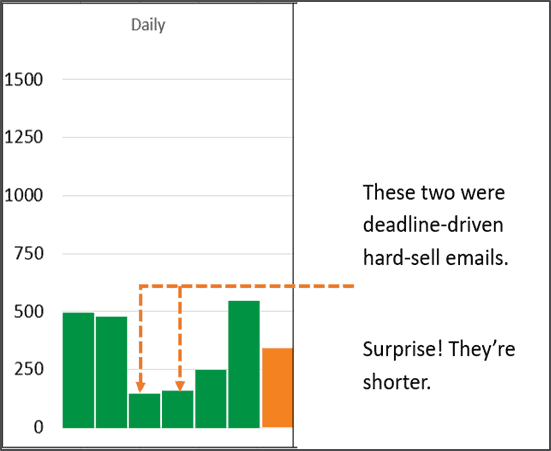
Note, if they hard-sold me day after day, I’d unsubscribe. But I know it’s only for a day or two, so I don’t.
As for the monthly email which I send on behalf of a client, one issue of that was also promoting an opportunity with a deadline. Guess what? It was the second shortest of that set.
All this suggests that effective hard-sell emails are shorter than relationship emails. Just don’t send them every day!
What does this mean for you and your email marketing?
Think about what you’re trying to achieve – with each and every email.
Decide how hard you want to sell, and set a strategy and frequency around that.
Quality of words matters more than quantity of words
I’m going to go back to those big data sets for this one. I found an article which broke down response percentage by number of words in detail. It didn’t just show ‘the best’. It showed the range. Here’s what that looked like:
-
- 10 words yielded a 36 percent response
- 25 words yielded a 44 percent response
- 50 words yielded a 50 percent response
- 75 words yielded a 51 percent response
- 100 words yielded a 51 percent response
- 125 words yielded a 50 percent response
- 150 words yielded a 49 percent response
- 175 words yielded a 49 percent response
- 200 words yielded a 48 percent response.
At the 500-word mark, the response rate fell to 44 percent, then remained steady until emails reached around 2000 words, at which point response rates plummeted.
Let’s display that visually:
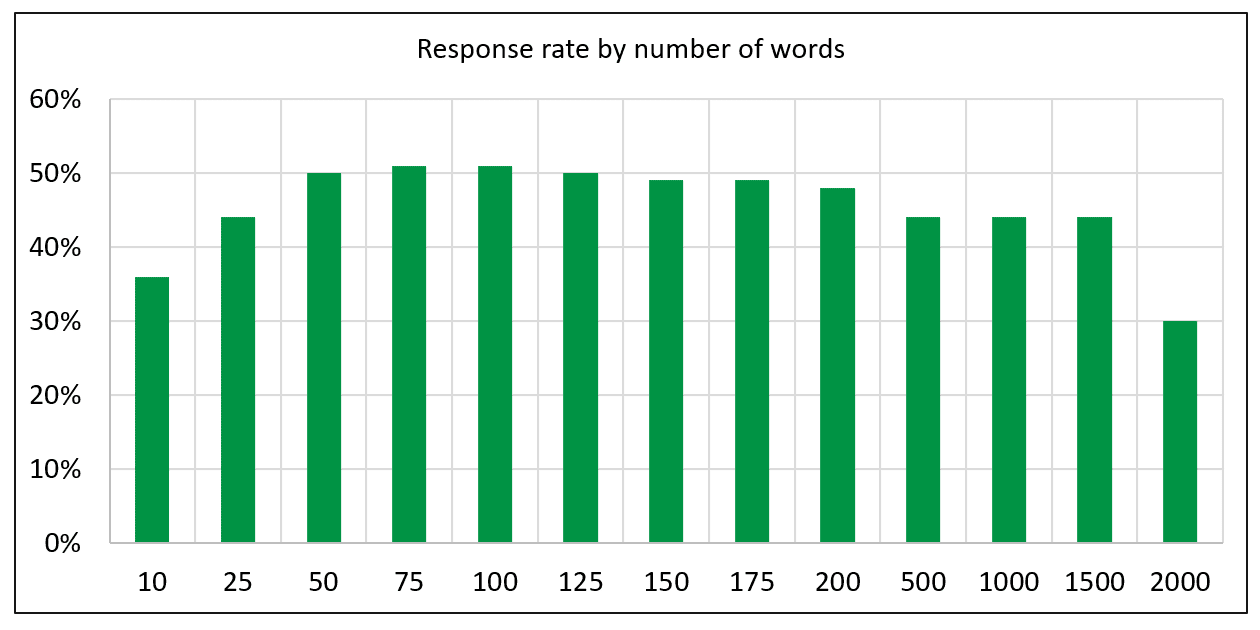
As the article itself says, for emails between 25 words and 1800 words ‘the differences in response rates aren’t drastic’. Also, and importantly, ‘a well-written 500-word email is very likely to outperform a poorly-written 75-word email’.
High praise for these people, who look beyond the headline statistic at what the data actually means! The whole article here, if you want to read it.
What does this mean for you and your email marketing?
I mentioned this already. But to be extra clear
‘a well-written 500-word email is very likely to outperform a poorly-written 75-word email’
So stop worrying about how long your emails are, and start working about how good they are.
And if you need help making them better, get in touch and let’s chat. 😉

